General PC Maintenance Tutorial
Regular maintenance will help keep your PC in good working order over a long period of time.
The following four utilities provide hard drive cleaning, virus & malware detection/removal and hard drive defragmentation (performance boost for mechanical hard drives).
If these utilities are not already installed on your PC you can download them here:
- CCleaner
- Emsisoft Emergency Kit or Microsoft Security Scanner (64bit version) or (32bit version)
- Defraggler
Most users will only require either the Emsisoft Emergency Kit or the Microsoft Security Scanner.
If your PC is running the builtin Microsoft Windows Security antivirus software, with no other third-party antivirus products installed, the Emsisoft Emergency Kit is the preferred choice.
Run these utilities about once a month or when you feel your PC no longer performs as well as it should.
Run them in the above order.
OR
Fig 1. These icons are located in the upper right-hand corner of your Windows desktop.
They are arranged in a top-down order of execution.
CCleaner
CCleaner is a hard drive cleaning utility that provides the following services:
- File and folder cleaning.
- System registry cleaning.
- Program uninstall.
- Program start-up control.
- Software and driver updates.
This tutorial focuses on the first two services.
CCleaner - Custom Clean
The Custom Clean service is used to remove old and unused files and folders from your PC. Custom Clean will not remove any files that you create.
Launch CCleaner from the desktop icon (see fig 1 above). You should see the following window appear:
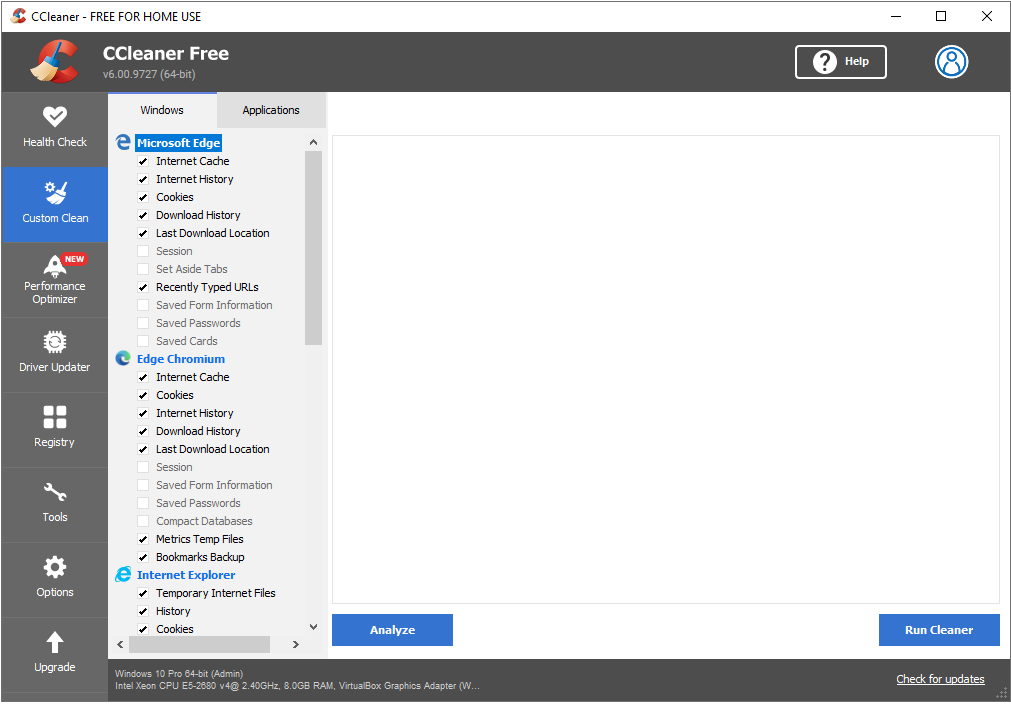
Fig 2. CCleaner is ready to perform hard drive cleaning.
To begin the hard drive cleaning process left mouse click (select) the “Run Cleaner” button located in the lower right-hand corner of the CCleaner Custom Clean window.
Custom Clean will scan your hard drive and remove old system files, log files, web browser cache files. Once finished, CCleaner will display a report of all files removed.
CCleaner - Registry Cleaning
The Windows Registry is a hierarchical database that stores configuration settings and options on Microsoft Windows operating systems.
Over a period of time the Windows registry can become cluttered with invalid entries. These invalid entries are typically left behind after uninstalling programs, system updates, etc.
Cleaning the Windows system registry will improve general performance.
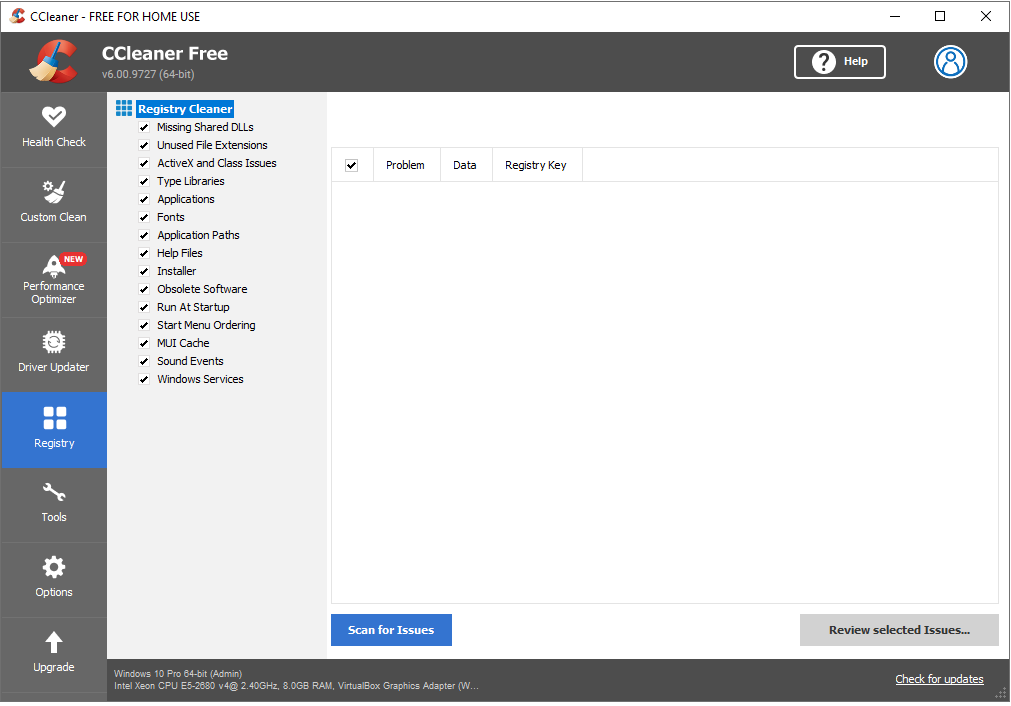
Fig 3. CCleaner is ready to perform a Windows registry cleaning.
This service requires a few more mouse clicks than the Custom Clean operation described previously.
- Select the Registry icon located on the left side column (Figure 3) (for new versions of CCleaner you will find Regisry in the Tools menu).
- Select the “Scan for Issues” button to start the process.
- Once the scan has finished, select the “Fix selected issues…” button (for new versions of CCleaner select "Review selected issues...").
- Select the “No” button on the next prompt, “Do you want to backup changes to the registry?”
- Select the “Fix All Selected Issues” button.
- Select the “Close” button once the registry cleaning has finished.
This completes the cleaning operation; you can now close the CCleaner window.
Emsisoft Emergency Kit
The Emsisoft Emergency Kit (EEK) is a secondary supplement program to your main antivirus program (i.e. Windows Security, AVG, Avira, Avast) and should not be used as your primary antivirus program. EEK requires the user to manually open and update the program and start the malware scanning procedure.
Note: If not already installed, EEK can be downloaded from the link at the beginning of this article. Once downloaded open file EmsisoftEmergencyKit.exe and install it to your preferred location (or the default locate C:\EEK). Create a desktop shortcut icon from the executable file "Start Scanner.exe".
Launch the EEK desktop icon (see fig 1 above). Select "Yes" to the "User Account Control" notice.
Fig 4. Selecting Yes gives EEK administrative privilege.
EEK first loads the current malware signatures before opening the main program window.
Fig 5. EEK is loading malware signatures.
This is EEK's main program window. From here you have access to all EEK features. Before running a malware scan ensure EEK is up to date. Select the "Update now" link.
Fig 6. EEK's main program window. EEK should be updated before running a malware scan.
The update process may take awhile to complete.
Fig 7. EEK update in progress.
EEK is now up to date and ready to start a malware scan. Select "MALWARE SCAN" from the Scan & Clean list.
Fig 8. EEK is now up to date and is ready to start a malware scan.
EEK Malware scan is running.
Fig 9. EEK malware scan in progress.
At the end of the malware scan Emsisoft invites you to install their antivirus software. This is optional, select Close to return to the scan results.
Note: If you want to install EEK's antivirus protection first uninstall any other third-party antivirus products such as AVG, Avira, Avast, etc.
Fig 10. EEK offers to install their antivirus software.
If all went well you should see a clean scan result. To finish select Close. You can move on to the next section of the tutorial.
Fig 11. EEK malware scan result. No infections found.
However, if EEK detected infection(s) you will be presented with a list of infection(s), like the one in this example. To remove the infection(s) select the "Quarantine selected" button.
Fig 12. EEK malware scan result. Infections found.
The infection(s) are now quarantined and you can quit out of EEK.
Fig 13. EEK malware scan result after quarantining infections.
You may be prompted to install EEK's antivirus protection. Again this is optional, select Close to exit.
Note: If you want to install EEK's antivirus protection first uninstall any other third-party antivirus products such as AVG, Avira, Avast, etc.
Fig 14. EEK offers to install their antivirus software.
If an infection was detected and removed it is recommended to run a full scan with your primary antivirus program.
Microsoft Safety Scanner
The Microsoft Safety Scanner is a supplement to your main antivirus program (i.e. Windows Security, AVG, Avira, Avast) and should not be used as your primary antivirus program. It requires the user to manually open the program and start the scanning procedure. The scanner will automatically remove any viruses or malware found on the PC.
Note: if not already available, the program can be downloaded from the link at the beginning of this article. The downloaded file can be placed in "C:\Users\Public\Downloads\Microsoft Safety Scanner". Create a desktop shortcut icon from file msert.exe.
Launch Microsoft Safety Scanner desktop icon (see fig 1 above). Select "Yes" to the "User Account Control" notice.
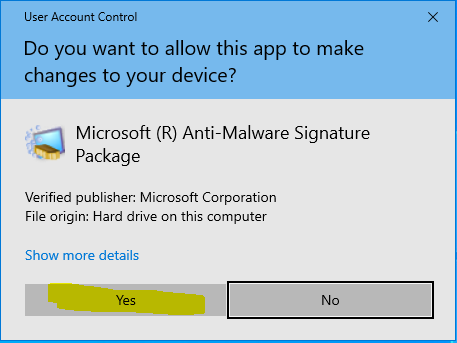
Fig 15. Selecting Yes gives Microsoft Safety Scanner administrative privilege.
Select check box "Accept all terms of the preceding license agreement" and select Next.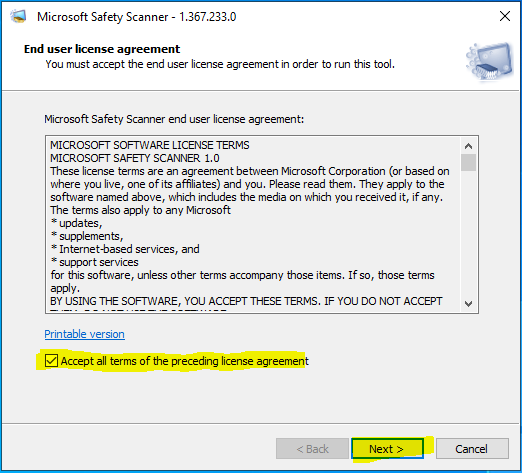
Fig 16. Microsoft Safety Scanner end user license agreement.
Has anyone ever read one of these?
Select Next on the Welcome window.
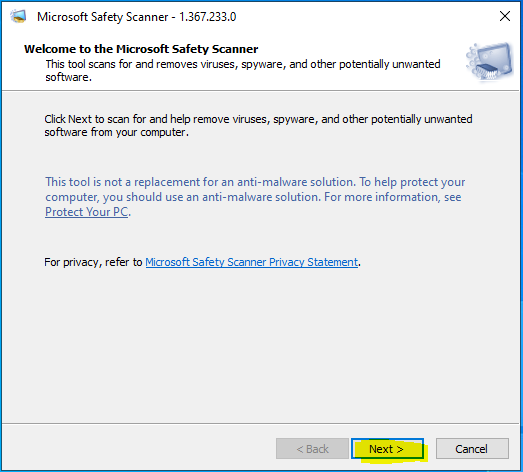
Fig 17. Microsoft Safety Scanner welcome screen.
Select "Quick scan" and select Next.
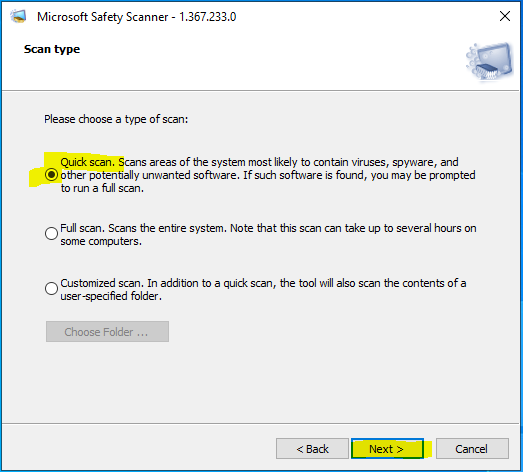
Fig 18. Microsoft Safety Scanner scan types.
Quick scan is now running. The scan should complete in 10 to 20 minutes depending on the PC configuration.
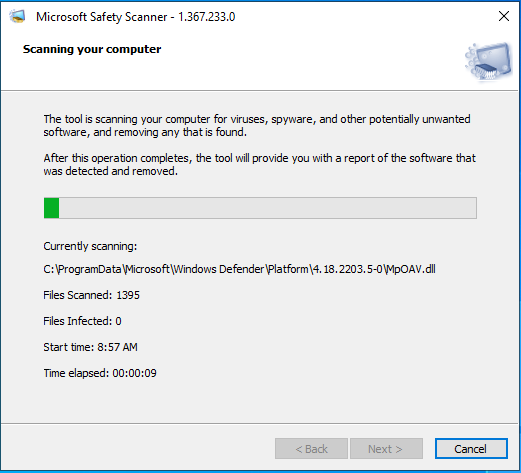
Fig 19. Microsoft Safety Scanner scanning your computer.
The scan is compete hopefully without finding any infections.
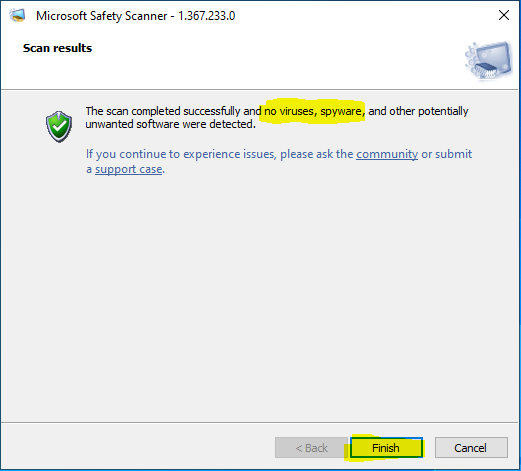
Fig 20. Microsoft Safety Scanner scan results.
When the scanner detects infections it will automatically remove them. You can view what was removed by selecting the "View detailed results of the scan" link.
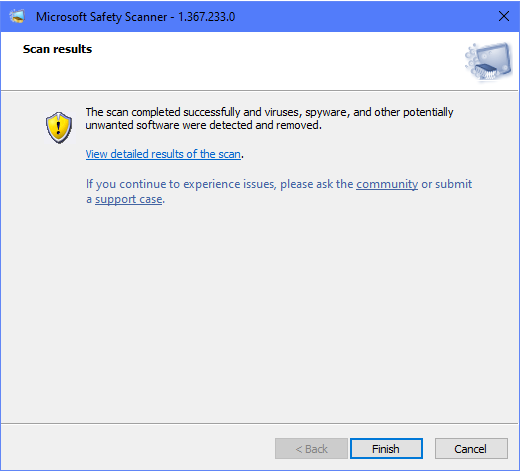
Fig 21. Microsoft Safety Scanner automatic infection removal.
Here is a sample of a removed infection.
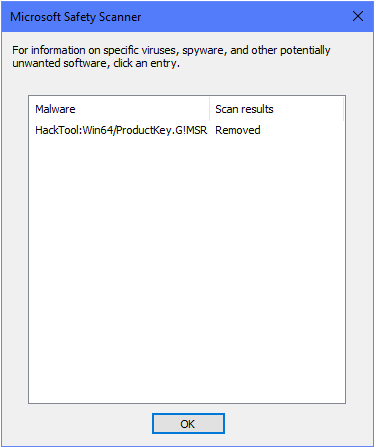
Fig 22. Microsoft Safety Scanner details of removed infection.
If an infection was detected and removed, re-run the program and select "Full scan". This scan will take a long time but will help to ensure no further infections are on the PC. Also it will be worth to run a full scan with your primary antivirus program.
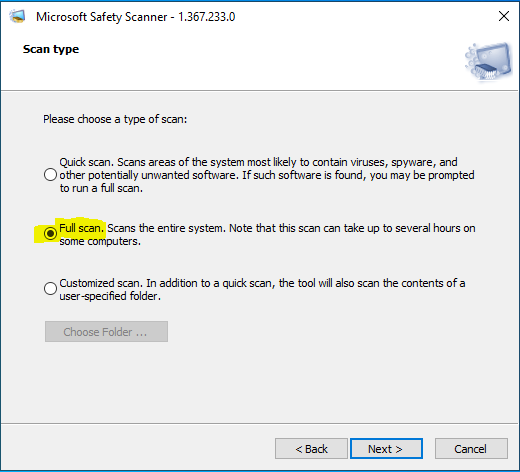
Fig 23. Microsoft Safety Scanner Full scan.
Defraggler
Mechanical hard drives (hdd) are becoming a thing of the past like DVD burners and floppy drives. Most PCs these days have a solid state hard drive (ssd) installed. SSD drives do not contain moving parts such as a read/write head or a spinning platter.
SSDs do not need defragging. If your PC has a ssd and no hdd(s) you can skip this section.
Defragging your Mechanical hard drive
Defraggler is a utility that reorganizes data on your mechanical hard drive. Hard drive data is laid down by Defraggler in a contiguous fashion which provides better overall system performance. Once the hard drive has been defragged, the hard drive's read/write heads do not have to move as much to fetch or store data.
This procedure is the easiest of the three to perform.
Launch Defraggler from the desktop icon (see fig 1 above) and select "Yes" to the "User Account Control" notice. You should see the following window appear (it may look slightly different from figure 24 depending on your computer’s configuration):
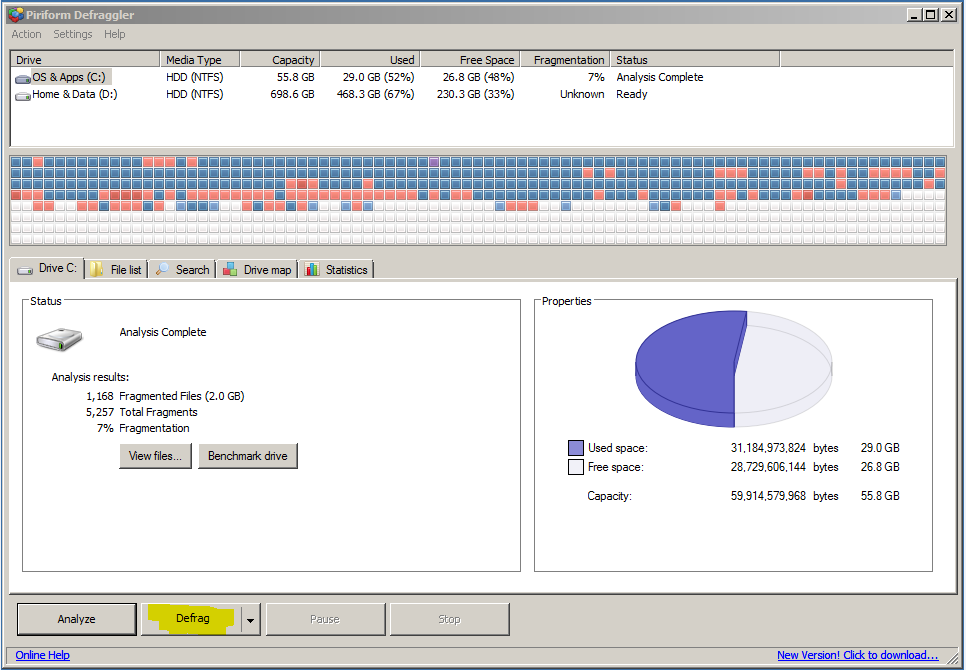
Fig 24. Defraggler is ready to rearrange the data on your hard drive.
Select the “Defrag” button to start the defragmentation process. Time required to complete this process varies depending on the condition and size of your hard drive (10 minutes to 3 hours). However, regular defragging will substantially reduce this time. Once the process has finished quite out of Defraggler.
NOTES:
- It is not recommended to work on your PC while Defraggler is running.
- If the hard drive is heavily fragmented (lots of red in the hard drive map, fragmentation percentage over 5%) it may require more than one run. Once Defraggler has finished, click on the “Defrag” button again. Repeat two or three more times.
Your PC maintenance run is compete.











